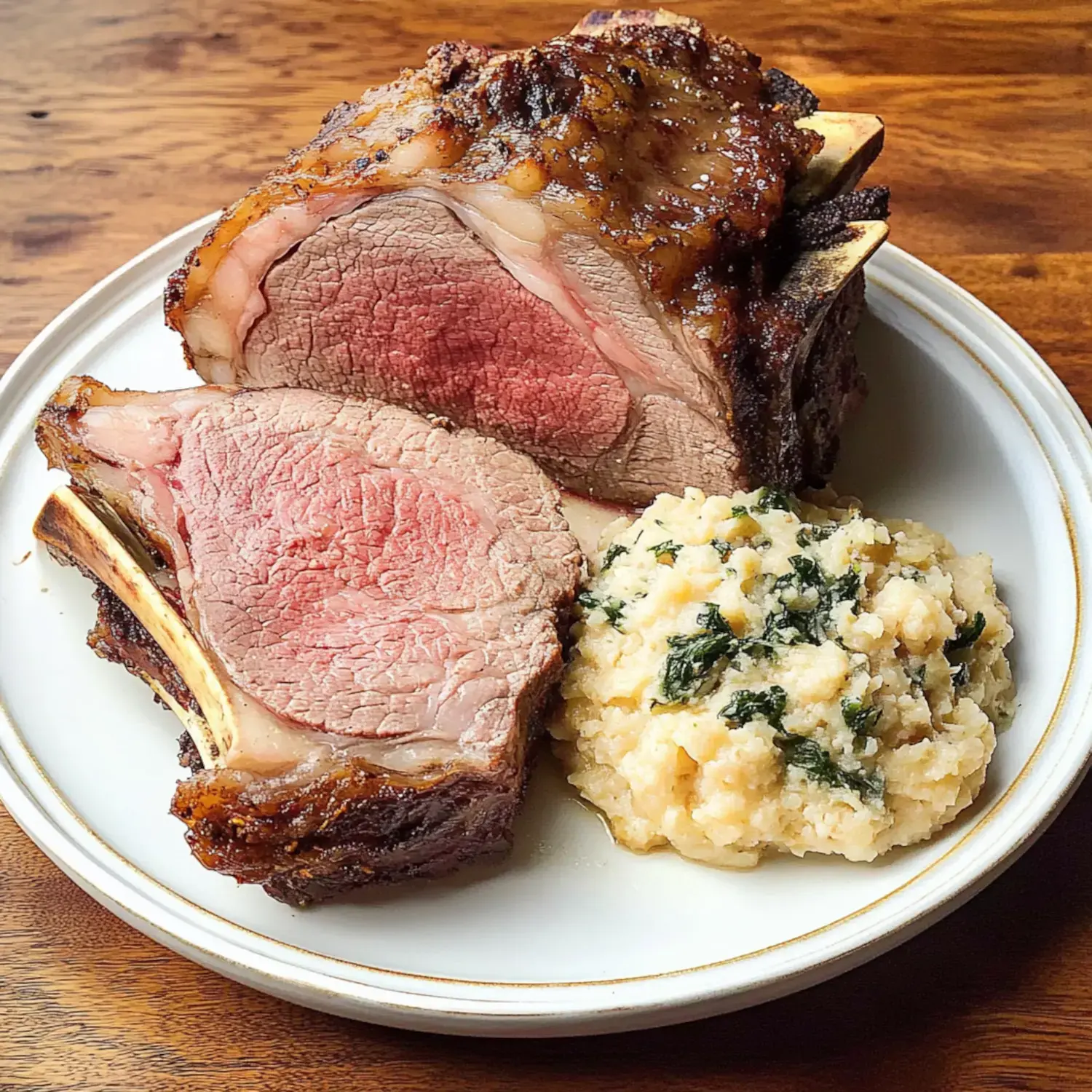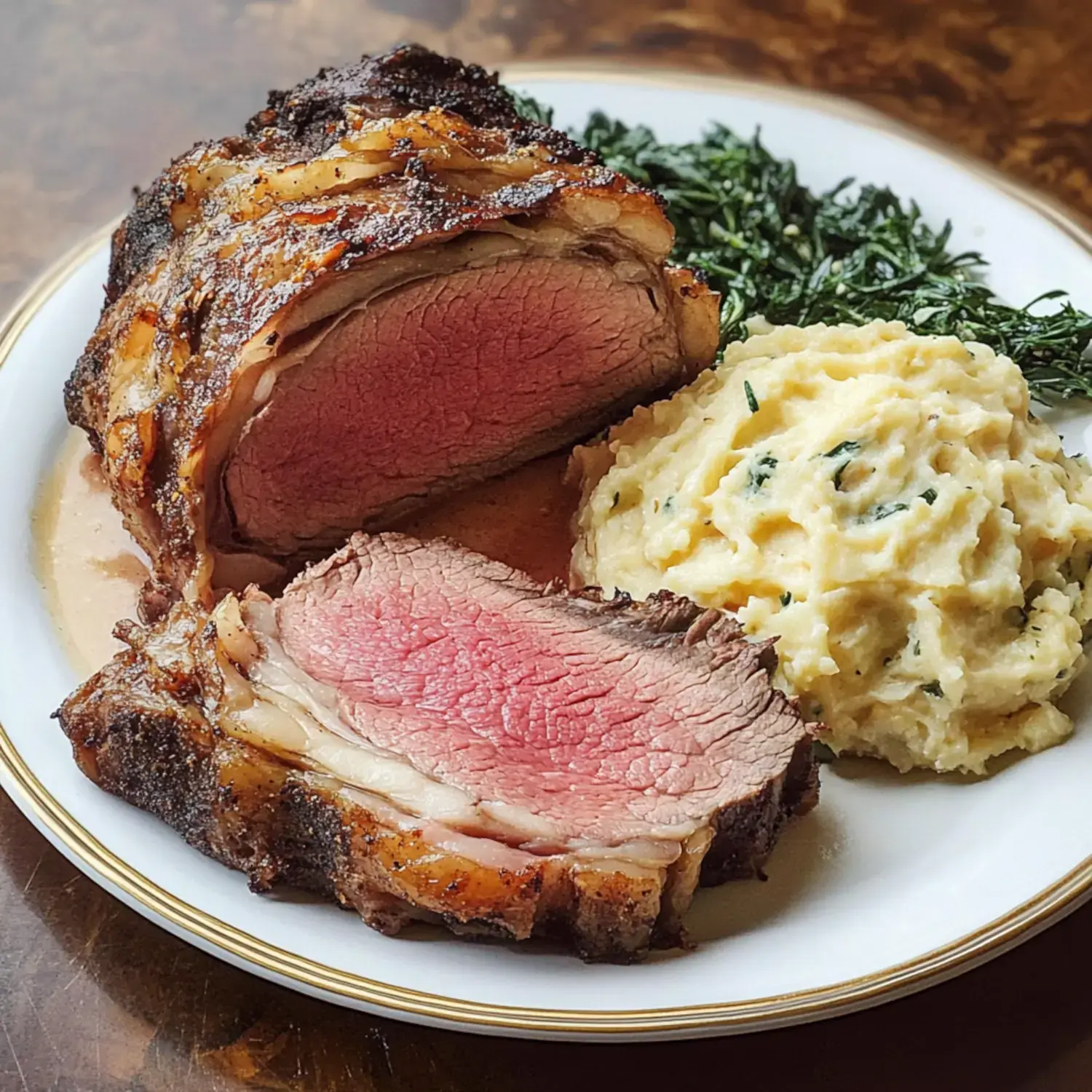 Pin it
Pin it
Our family holidays revolve around my famous prime rib. Breaking through that dark brown crust into pink, juicy meat inside brings smiles all around. It took me forever to nail this method, but now I can share how easy it actually is to make this knockout main dish with just two simple cooking tricks.
Why This Method Works So Well
The trick lies in starting with blazing heat then switching to slow cooking. I've never had this approach fail - you'll get that amazing outer layer while keeping everything inside just right. Guests always think I've spent hours slaving away, but it's way easier than it looks.
Getting To Know Prime Rib
Prime rib comes from the middle section, ribs 6 to 12, and it's pure gold. If you've had ribeye steaks before, you've tasted slices of this fantastic cut. Though I love cooking with the bones, you can ask your meat guy to cut and tie them back on - makes serving a breeze later.
Ingredients for Prime Rib
- Prime Rib Roast: For feeding lots of people, grab one between 12-16 pounds - it's stunning.
- Kosher Salt and Black Pepper: Don't hold back - these create that mind-blowing crust.
- Optional Aromatics: Fresh thyme, rosemary and garlic boost the smell and taste wonderfully.
- Butter: Use it softened to help get that golden-brown outside.
How to Roast Prime Rib
- Step 1 - Prepare the Roast
- Take the meat out, season it heavily right away, then let it sit for 2 hours warming up.
- Step 2 - Oven Sear
- Heat your oven to 500°F and cook the roast for 15 minutes to start forming that amazing crust. Your kitchen will get smoky so open windows.
- Step 3 - Reduce the Temperature
- Turn the heat down to 325°F and cook about 13 minutes for each pound. Check with a thermometer - 115°F for rare, 120-130°F if you want medium.
- Step 4 - Rest and Carve
- Let it sit for 30 full minutes before cutting. This wait feels endless but gives you the juiciest meat possible.
Insider Advice
Get to know your butcher and they'll set you up with the best cut. Don't wait to season - do it right when the meat comes out cold. Never skip that 30-minute rest, and always use a reliable meat thermometer because guessing won't work.
Tasty Sauce Options
We can't get enough of the sharp horseradish cream alongside this rich meat. The cool bite balances everything perfectly. You can't go wrong with dripping-based gravy either, or just keep it simple with some light au jus that won't overpower the beef.
 Pin it
Pin it
Storing Leftovers
You can keep extras in your fridge for about 4 days. When it's time to reheat, add a little beef broth and warm it slowly in the oven. This way you won't ruin that beautiful pink center we worked so hard to get.
Frequently Asked Questions
- → How do I know what size prime rib to buy?
- Figure about one pound per guest, or each bone feeds roughly two people. A 7-pound cut will feed 6-8 folks with some extra for tomorrow. The bones boost flavor while cooking and make a tasty bonus serving.
- → Why do we let the meat rest at room temperature before cooking?
- Bringing meat to room temp helps it cook evenly from outside to middle. This key step makes sure you get your preferred doneness throughout, and gives the salt time to work its magic on the meat.
- → Can I skip the high-heat searing step?
- You can skip it, but that hot sear creates a tasty outer crust on your roast. This method keeps juices inside and builds flavor through browning, though you might get some smoke in your kitchen.
- → How long should the prime rib rest after cooking?
- Give your roast at least 30 minutes to rest before slicing. This lets all those tasty juices spread back through the meat for super moist slices. The temperature will climb another 5-10 degrees during this break.
- → Can I make the horseradish cream sauce in advance?
- You can definitely make the horseradish cream a day ahead and pop it in the fridge. It actually tastes better when the flavors have time to mingle. Just give it a quick mix right before you serve it.
